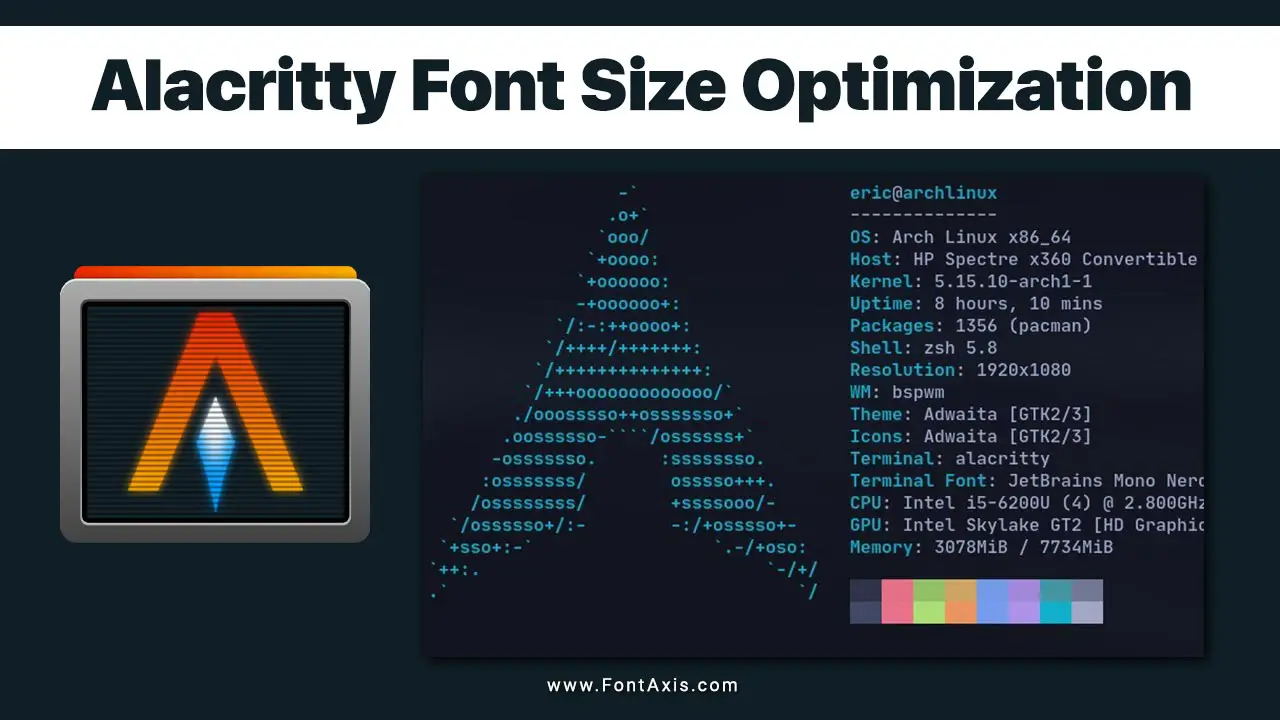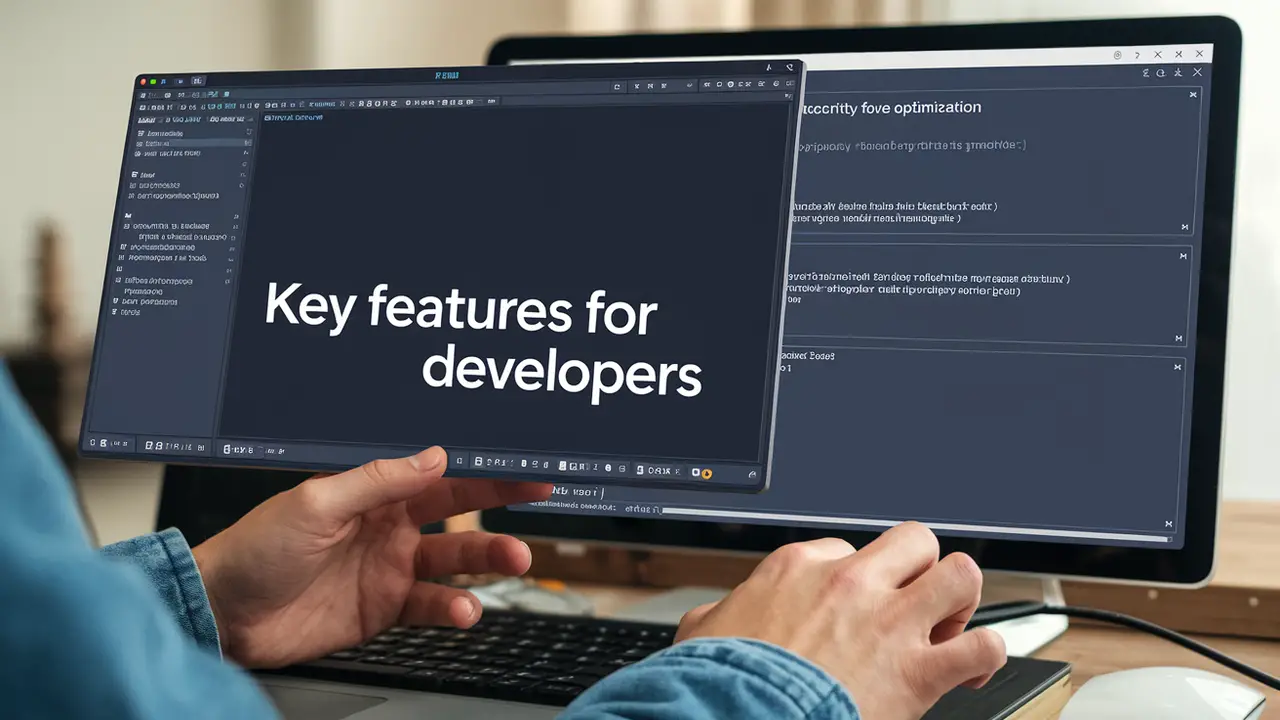Businesses and developers must continuously optimize their websites for performance in the fast-evolving digital landscape. One critical but often overlooked aspect of website performance is font size optimization. The right font size can drastically improve readability, user experience, and page load speeds, which are crucial for business growth.
Here, we delve into the Alacritty Font size optimization process. We will cover everything from groups of users to the impact on speed, configuration settings, and font size values.

Alacritty Font Size Optimization Process: Step-By-Step
Alacritty Font Size Optimization leverages AI and deep learning to improve websites’ readability, performance, and overall user experience by optimizing font sizes. Here’s a step-by-step guide to the process:

Step 1: Data Collection And Analysis
Alacrity first gathers key data points to understand user interactions and website behavior:
- User behavior: Tracks how users scroll, click, and engage with the text.
- Device types: Identifies whether users are on mobile, tablet, or desktop.
- Screen sizes: Analyzes screen resolutions and dimensions.
- Font performance: Measures font rendering speed and load times.
This data helps the AI understand the needs of different user groups and contexts.
Step 2: Ai-Driven Font Size Recommendations
Alacrity’s AI analyzes the collected data using deep learning to recommend optimal font sizes. It considers factors like:
- Speed: Balances font size to improve page load time without sacrificing readability.
- Content type: Adjusts font size based on content—headlines, body text, or hyperlinks.
- User interaction: Based on interaction metrics like bounce rates and time spent on pages, it suggests font sizes that improve engagement.
Step 3: Customization Via Settings And Config Files
Developers can implement Alacrity’s recommendations by adjusting font settings through the platform’s tools, including:
- Device-specific fonts: Customize font sizes for mobile, tablet, and desktop.
- Line height and spacing: Fine-tune line spacing to complement font sizes.
- Font types: Configure font sizes for different text sections (headers, body, etc.).
This customization allows precise control over the website’s appearance and performance.
Step 4: Testing And Performance Review
After changes are implemented, the site is tested for:
- Page load speed: Ensuring that font sizes don’t negatively affect load times.
- User engagement: Monitoring bounce rates, time on page, and click-through rates.
- Consistency: Checking font size appearance across different devices and screen sizes.
This phase ensures the changes improve both performance and user experience.
Step 5: Ongoing Optimization With Machine Learning
Alacrity continuously refines font sizes based on real-time user feedback and evolving site needs:
- Real-time adjustments: AI tools adjust font sizes as new user data is collected.
- Version control: Developers can track and compare different versions of font settings to identify the best one.
This step ensures the website remains optimized as it grows and user behaviors change.
Step 6: Implementation Of Special Features
Alacrity provides additional tools to optimize font sizes in specific contexts:
- Animations: Ensures font sizes within animations load efficiently.
- Hyperlinks and UI elements: Optimizes text in buttons, tabs, and hyperlinks to ensure clarity and prominence.
- Graphs and images: Adjust font sizes in data-heavy areas, such as graphs and image captions.
These features ensure text remains readable and performance stays high, even with complex content.
Step 7: Final Review And Reporting
After the optimization process is complete, Alacrity generates a detailed report covering:
- Speed improvements: How font optimization has impacted load times.
- User engagement metrics: Effects on user interaction, including time on site and bounce rates.
- Optimization summary: A breakdown of the recommended settings and adjustments made.
This report helps developers and businesses understand the impact of font size changes and plan for further improvements.
By following these steps, Alacritty Font Size Optimization enhances website performance, improves readability, and ensures a seamless user experience across all devices.
Alacritty Font Size Optimization Tools: Key Features For Developers
Alacrity offers several tools and solutions designed for developers to optimize font sizes efficiently.

Settings And Config File Customization
Developers can use a config file to preset font sizes across different devices. This allows for easy adjustments and testing. Alacrity tools can help identify the optimal configuration by running deep learning models in the background.
Version Control
Different font size optimizations can be used to review each site’s version. The review process is easy to follow using the Alacrity platform, which tracks performance changes with each version.
Ai-Driven Recommendations
Alacrity uses deep learning to provide guidance and detailed reports on what font size works best in various scenarios based on user interaction data.
Hyperlinks And Image Optimization
Alongside font size, developers can optimize other text elements, such as hyperlinks, which often need distinct pixel values to stand out. Moreover, the surrounding image context can affect text readability, which Alacrity addresses by offering optimal font size recommendations for content-heavy pages.
Key Considerations For Font Size Optimization
- Detail and Writing: Font sizes should be chosen based on the type of writing. Readability is key for long-form content, while a smaller font size may be more suitable for short, punchy texts.
- Columns and Tabs: Websites with multiple columns and tabs need consistent font size configurations to ensure a seamless user experience.
- Types and Lines: Fonts come in different types and may require specific line height settings to ensure readability.
- Animation and Effect: If your site uses animation, the font size must be optimized to ensure smooth transitions. Larger fonts may cause performance issues, particularly if the animation involves heavy material or graphic components.
Conclusion
Optimizing font size using Alacrity’s tools and AI-powered solutions can significantly enhance the performance of any website. For businesses looking to grow, improved readability and faster page load times are critical to retaining users and boosting conversions.
Whether you’re working with columns of text, setting hyperlink styles, or embedding animations, having the right font size is key to improving user experience and overall site performance. Alacrity provides detailed reports and guidance, helping developers optimize font sizes with minimal effort.
FAQs
1.What Is Alacritty Font Size Optimization?
Alacritty Font size optimization is a solution that uses AI and deep learning tools to automatically adjust font sizes based on user data, improving website speed and performance.
2.How Does AI Assist In Font Size Optimization?
AI helps by analyzing user interactions and performance metrics and suggesting optimal font sizes for various devices, screen sizes, and content types.
3.Can Alacrity Optimize Fonts For Mobile Devices?
Yes, Alacrity’s AI tools dynamically adjust font sizes to fit mobile screens, ensuring better readability and user engagement on smaller devices.
4.Why Is Font Size Important For Website Performance?
Optimal font size reduces load time, improves readability, and enhances overall user experience, which can lead to better search engine rankings and higher traffic.
5.How Do I Configure Font Sizes Using Alacrity Tools?
You can configure font sizes using the settings panel or modify the config file in the Alacrity platform, allowing for detailed customization across different devices.
